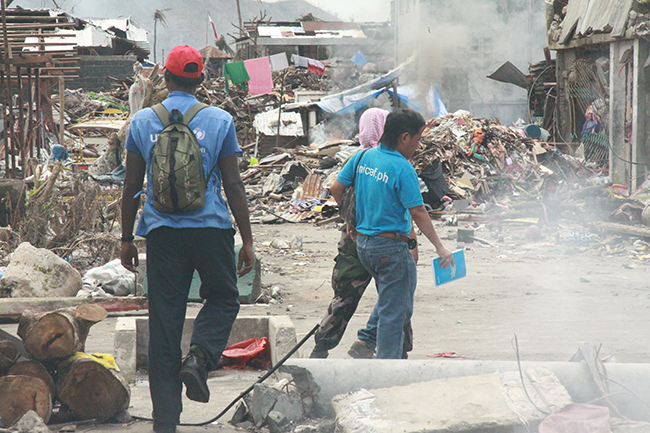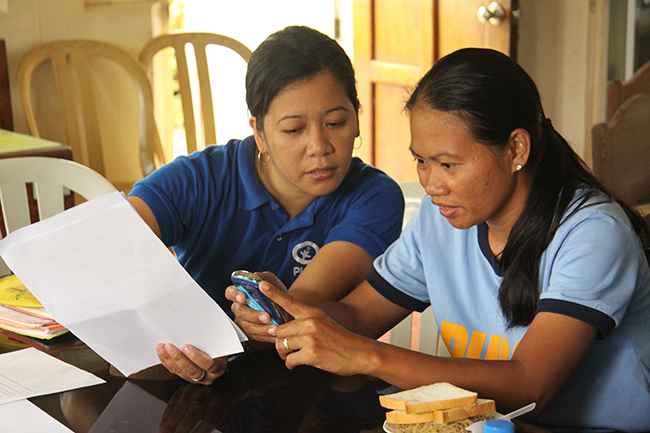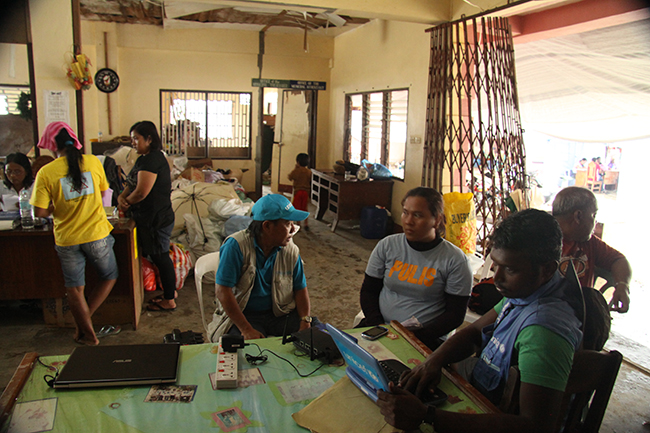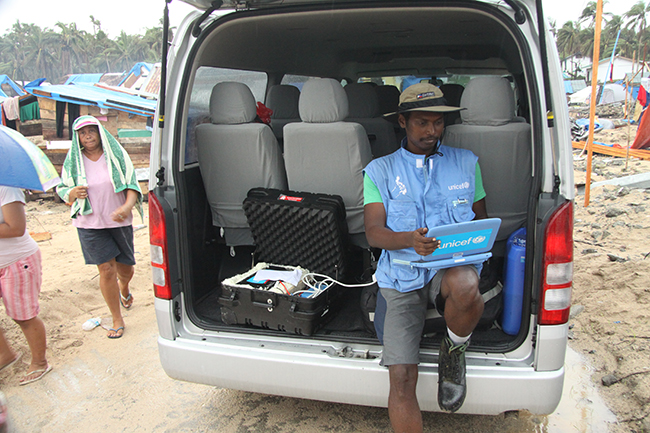
Innovations in Emergencies: Deploying RapidFTR Philippines
An effort to reunite children displaced in the Typhoon with their families
Sri Prasanna is a senior developer at Thoughtworks and in this experience report, he shares his unforgettable experience being on the ground deploying RapidFTR and helping little children reunite with their families.
Within a few days of Typhoon Yolanda’s collision with the Philippines, UNICEF organized a team to deploy RapidFTR (Family Tracing and Reunification system) as part of the Child Protection programme’s efforts to speed up the process of identifying children separated from their primary caregivers and reuniting them with their families. The team includes the Innovations in Emergency Lead from HQ in New York, Mac Glovinsky; RapidFTR Technical Project Coordinator based in the UNICEF Uganda office, Cary McCormick; and two employees of Thoughtworks from India, Sri “Batman” Prasanna and Subhas Dandapani. Thoughtworks has been supporting the development of RapidFTR for the past three years, and offered two of their colleagues with RapidFTR experience to the UNICEF emergency response free-of-charge.
Not many of us are aware of the damages caused by the typhoon. To understand the impact of RapidFTR first we must know a little about Typhoon Haiyan.

Typhoon Haiyan/Yolanda
It started out as Tropical Depression with wind speed 48km/h on November 3rd and declared as “Super Typhoon” on November 7. On November 8 at 4:40 am, Typhoon Yolanda moved inland at Guiuan with a wind speed of 315km/h(Cyclone Phailin was ~220km/h) making it the strongest typhoon ever recorded. Along with the wind came the rain and storm surge, in some places up to 13 feet. In Leyte province, the water came 1.5km inside the city. The three natural forces, together, caused unspeakable damages to the island provinces of Visayas, Philippines.
Damage
The water washed away thousands of men, women and their children. The wind shattered glasses, tore apart huge buildings, smashed vehicles, uprooted large trees and snapped coconut trees. People lost their lives, loved ones and livelihood. All modes of communication were dead and there was no electricity. Airports and roads were damaged, which subsequently delayed the relief efforts. People were left on the streets looking for food and shelter. Curfew was imposed shortly after people looted shops for food, clothes and medicines. (“Loot” is not the right word, when you haven't had food or clean water for days you don't think about morality or consequences and I certainly would have done the same if I were in their shoes.)
Damages to the people and their livelihood we saw on the field were shocking, unbelievable and emotionally haunting.

RapidFTR
For people who don’t know much about RapidFTR, you can find what RapidFTR is about here and here.
In the Philippines, RapidFTR's mission is to find as many unaccompanied and separated children as possible in the disaster affected region, collect their information and send it to appropriate people so that they can provide support to these children. RapidFTR speeds up the process by providing the child protection specialists with the web application (deployed on the cloud as well as on netbooks for offline) and the field workers with the mobile application eliminating the previously used paper forms completely. Since we regularly sync the data between the cloud, netbooks and mobile, the child protection specialists can get the data within minutes (unlike collecting data with paper forms) and take immediate actions.

Initially, the humanitarian responders didn't believe that there were many unaccompanied or separated children. There are 14 million people affected, 4 million people displaced, 5982 reported dead and 1779 people missing, and claiming there aren't many unaccompanied or separated children is ridiculous. Since collecting data was made easier through mobile application, the social workers and the policewomen were able to go as many places as possible and find the children. They were able to find unaccompanied/separated children in places where the local officials believed that no such cases existed in their towns. These children and their needs probably would have remained invisible if it hadn't been for the work of these social workers, policewomen, and RapidFTR. To the officials, this came as a shock and surprise but it showed the true potential of the application, without hesitation or any further delay they started taking actions to support these children. There’s a team of government officials on the ground here visiting every child on the records we have and supporting them. This wouldn't be possible if they were still using paper forms (which of course in some places they used and it did not go well as they expected).

Our Experience
The deployment was physically demanding and mentally exhausting. The children we met and their stories got everyone of us on the field. What pulled us together and got us going were the people we were working with. They lost everything they had but they were still out in the field helping others. A policewoman, for example, while driving through her town, with a big smile pointed at an empty plot and said “That's my house”, and a social worker who lost her grandson had been working without a break since the typhoon, while another had lost her daughter. Everyone had their own tragic stories but kept going because they wanted to save and help millions others.
When we found more and more children, I did not know how to react. Should I be happy that we found so many children or should I be sad that there are so many more children like these? Unfortunately, there are lot more of them out there, displaced, without their families and living in horrible conditions.
To summarize my experience in one sentence: I am grateful for everything I have in my life, and I feel more human and alive for contributing to software products that serves humanity.
If you're interested in a job that allows you to combine technology with making a social impact, check out our Careers page.
Disclaimer: The statements and opinions expressed in this article are those of the author(s) and do not necessarily reflect the positions of Thoughtworks.














